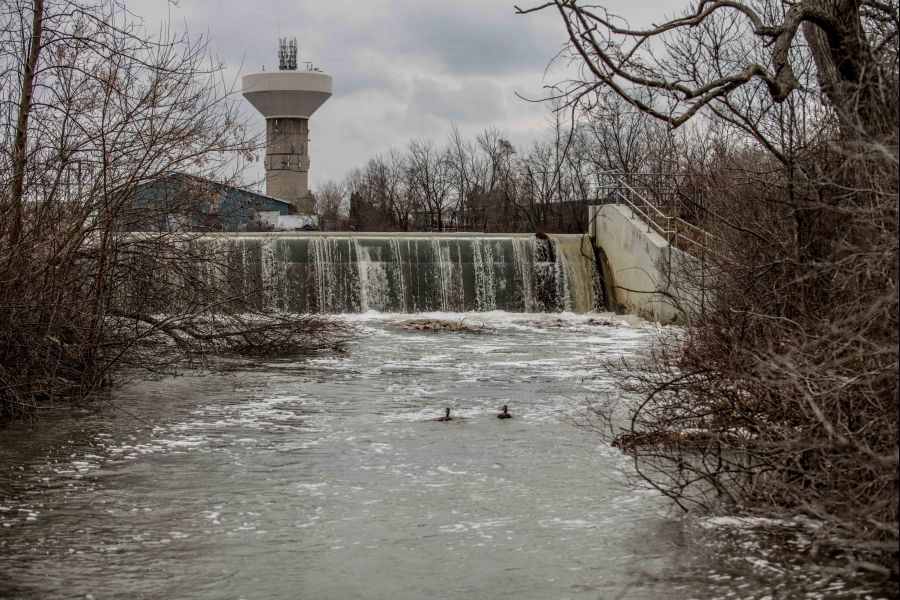Liz Benneian
Special to The Lake Report
In Niagara, we have exactly one cold water creek left that can support a fish population and it’s in trouble.
As conservation authority reports have noted for decades, Niagara’s surface water quality rates a “D.” The condition of our forest rates a “D.”
According to Carolinian Canada, in Niagara we have less than half the natural areas we need to maintain basic ecological functions and only 50 per cent of the green infrastructure that’s required to mitigate the impacts of global warming. The global extinction crisis is playing out here in Niagara where wildlife and native plant populations are in a precipitous decline. Across Canada, wildlife populations have declined by 50 per cent in the past few decades — 50 per cent!
I have been to three different meetings in the last couple of weeks by three different groups that are trying to address these issues in different ways. All are looking at citizens and asking what we can do. And I’m fed up.
If we want to turn things around, it is not citizens that we need to look to. It is our political leaders who need to step up to the plate because it is bad policy that is allowing humans to destroy the environment that we all depend on. And it is policy change that will fix things.
Want to change things fast? Then elected officials, don’t ask citizens to organize tree plantings. Change policy to protect existing forests, wetlands, their buffers and linkages through the implementation of a natural heritage system.
The Region of Halton, an area that has an urban/rural mix like Niagara, has protected 33 per cent of its land through natural heritage system zoning.
This change doesn’t prevent agricultural activity, in fact, it protects farming, and the businesses that support it, from being paved over.
The first step in creating such a system is to do a natural heritage inventory that identifies the most ecologically significant areas, maps sufficient protective buffer lands around them and then delineates potential linkages between them to create a system that is sound enough to remain healthy even as development goes on around it.
A decade ago, the Niagara Peninsula Conservation Authority spent two years completing such studies only to have the work shelved by a regional council that felt the information was a “burden” to its development plans.
The conservation authority is now starting to update that mapping. The region is consulting to update its official plan, including natural heritage and climate change components. Now is the time for citizens to make their voices heard on these issues.
Enact private tree bylaws and don’t be timid. Follow the best practices of leading municipalities, like Oakville. Strong, enforced private tree bylaws are the only way to stop developers from clear-cutting land before they submit a site plan.
Require the planting of only native trees, shrubs and flowers in all new developments and on all town property. When we plant non-native plants that don’t feed our native species, we are creating giant black holes in our local ecology.
Consider this one example: a native white oak feeds almost 500 native creatures, including the insect larvae that our songbirds need to feed their young; by contrast, Norway Maple, including the popular King Crimson, feed two species. Only two.
Be leaders in explaining to citizens the value of restoring our ecosystem through planting natives in resident’s own backyards. Budget to replant our rural roads and change bylaws to promote naturalized landscapes, including maintained meadows and native flower gardens instead of lawns.
Budget for green infrastructure as you do for grey infrastructure. Trees and wetlands can provide the same services as pipes and drains in terms of preventing flooding but they have the added benefits of providing oxygen, cleaning the air and water, providing habitat for animals, recreational areas for humans and shade that cools the heat island effect in cities — an ever more important factor as climate change accelerates.
Put better planning policies in place that protect our remaining natural areas and require sufficient setbacks (7.5-metre buffers don’t cut it). Require that developers put topsoil back on sites after they develop them, so urban trees have a chance to grow, and require soil quality and quantity standards for street trees. Require permeable paving and promote rain gardens to both prevent flooding and ensure cleaner water enters our creeks, streams and lakes.
I have spent 15 years of my life doing everything I can. I have organized community groups to plant more than 17,000 native trees. I have provided environmental science education to more than 70,000 students in 13 regions, I have met with local politicians and MPPs. I have led marches at Queen’s Park and I have delegated to innumerable regional and municipal councils.
I have started various advocacy and action groups, led urban first tours, organized native plant sales and restored nature in my own backyard. I have advocated against bad development plans and policies and worked hard to get better leaders elected – and now I’m exhausted, I’m frustrated and I’m heartbroken to see the ever-increasing decline in our natural world and the ever-increasing threat caused by the climate crisis.
Politicians, step up! There is no time to waste, no time for excuses and no one else to rely on. Now, it’s on you.
Liz Benneian is the manager of environmental education for the charitable group Ontariogreen. As well, she is a board member of A Better Niagara.









